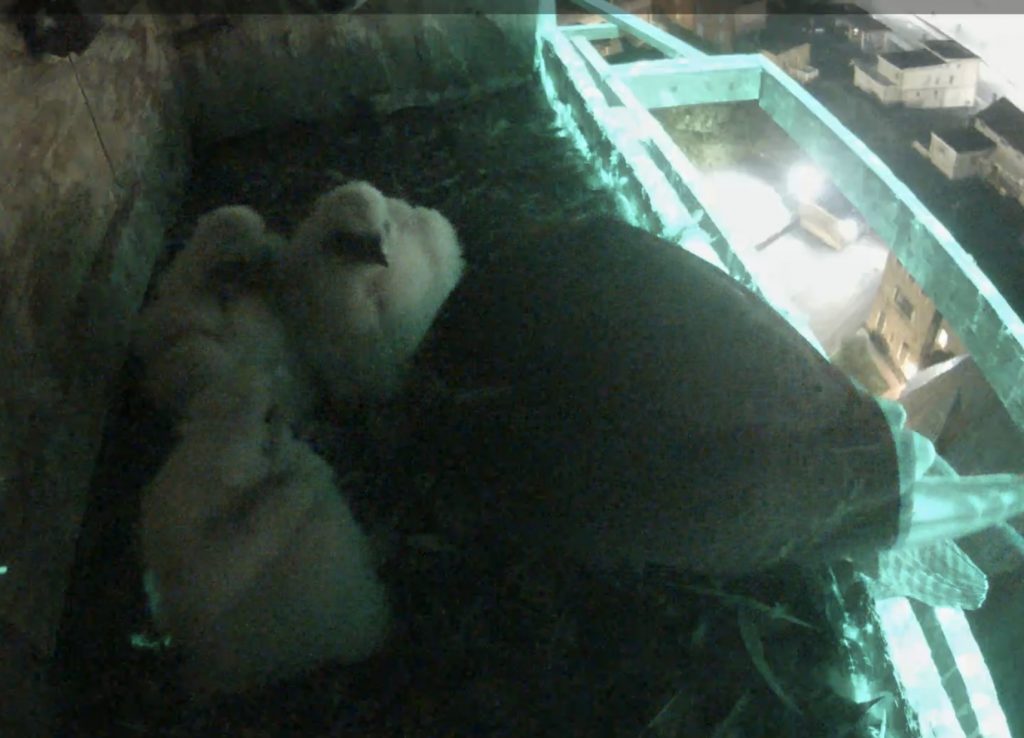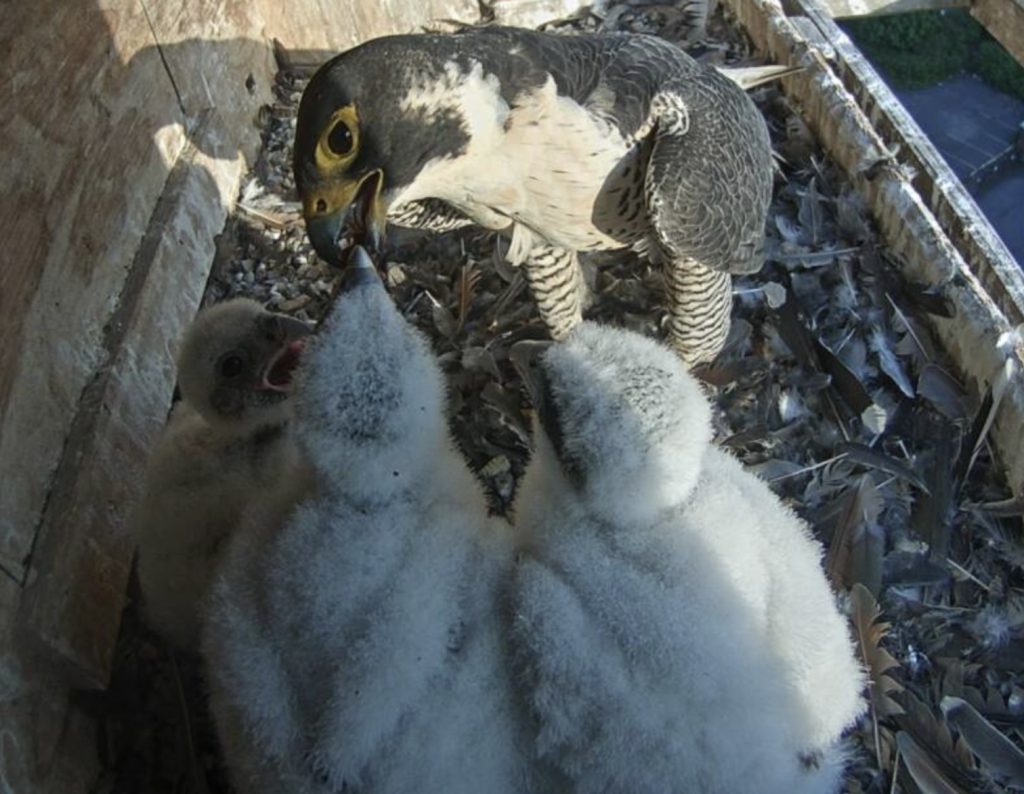Update for Tuesday, May 21, 2024

Overnight Astrid and Ares fed the young multiple times and they continued providing meals right until about 10:40 AM. Their plan was to pack them with as much nutrition as possible so it would be easier for them to fast during the hottest part of the day. During periods of extreme heat, breeding Peregrine Falcons may refrain from feeding their nestlings as a strategic response to prevent overheating and dehydration. Peregrine falcon chicks are highly susceptible to the effects of intense heat due to their limited ability to regulate their body temperature and their high metabolic rates. Feeding, particularly with protein-rich prey, generates additional metabolic heat, which can exacerbate the risk of overheating in young nestlings. By delaying feeding during the hottest parts of the day, adult peregrine falcons help to minimize the thermal stress on their chicks. Instead, they often prioritize shading the nestlings with their wings or positioning themselves to block direct sunlight. This behavior helps to keep the nest cooler and provides a more stable environment for the young birds. Feeding may be concentrated during the cooler morning and evening hours when the risk of overheating is lower, ensuring that the nestlings still receive adequate nutrition without the added stress of high temperatures.

